Aurora Australis: A Colourful Show Given By The Cosmos
29th May 2024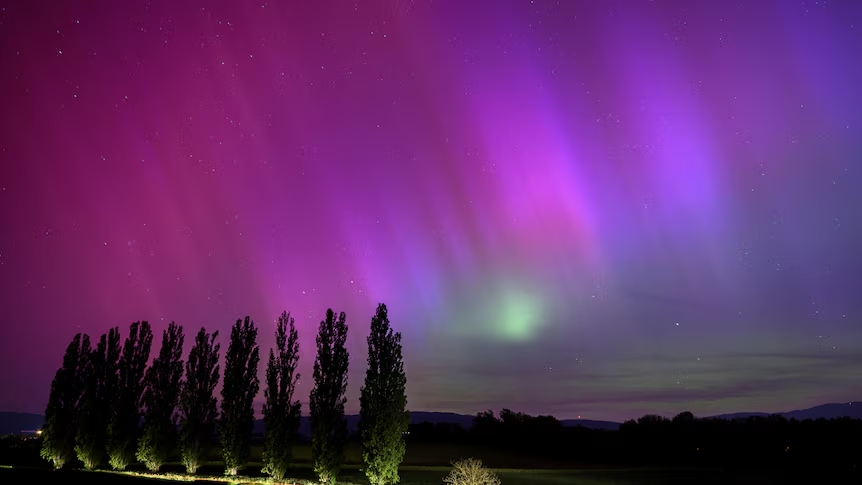
In the very heart of the harsh polar night, like a beacon of light cutting through the ocean of impenetrable darkness, a unique spectacle is born — the Southern lights Aurora Australis. This magnificent light show is a true miracle of nature that leaves a lasting impression on everyone who is lucky enough to see it.
This article will explain the origin of Aurora Australis, how it differs from Aurora Borealis, and the best places to see the Southern lights.
Where Do the Southern Lights Come From?
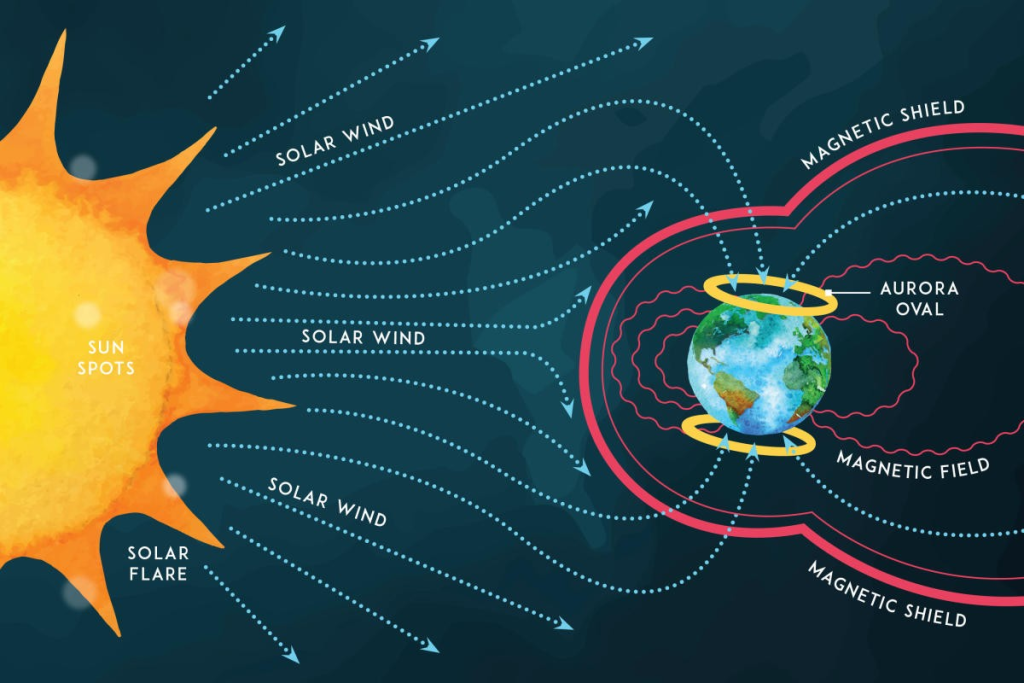
You may be surprised, but we owe this miracle…to space. Or rather, our Sun. Aurora results from the interaction of the Earth’s magnetosphere with charged particles from the Sun. These particles are carried towards Earth by the solar wind and consist mainly of electrons and protons. When they reach Earth, they are guided along the Earth’s magnetic field lines, which converge at the polar regions where the magnetic field is strongest. As a result, most particles enter the atmosphere in the polar regions, where they interact with atmospheric gas molecules, causing luminescence. Depending on the hemisphere in which the phenomenon occurs, we call it Northern or Southern lights. This gives us a simple answer to the question: What is the difference between Northern lights and Southern lights?
Why Is It Called Aurora Australis?
The name “aurora Australis” comes from Latin and translates as “southern dawn”. The phenomenon was named after the Roman goddess of dawn, Aurora, as it symbolises the bright dawn light, while the word “Australis” (southern) indicates the occurrence of this phenomenon in the Southern Hemisphere. Northern lights are called aurora borealis, from the Greek “boreas”, meaning “north wind”.
Do Southern Lights Look Like Northern Lights?
Yes and no. Even though aurora borealis and aurora australis are essentially mirror images of each other, the specific view from each pole can sometimes be slightly different due to factors such as the angle of the solar wind and the state of the Earth’s magnetic field. These factors can cause differences in the shapes of the auroras and their location in the sky. Despite these variations, the basic characteristics, including colours and their movement, are very similar in both hemispheres.
What Colours Are Southern Lights?
The colors of the aurora largely result from light released by excited oxygen atoms and nitrogen molecules and ions.
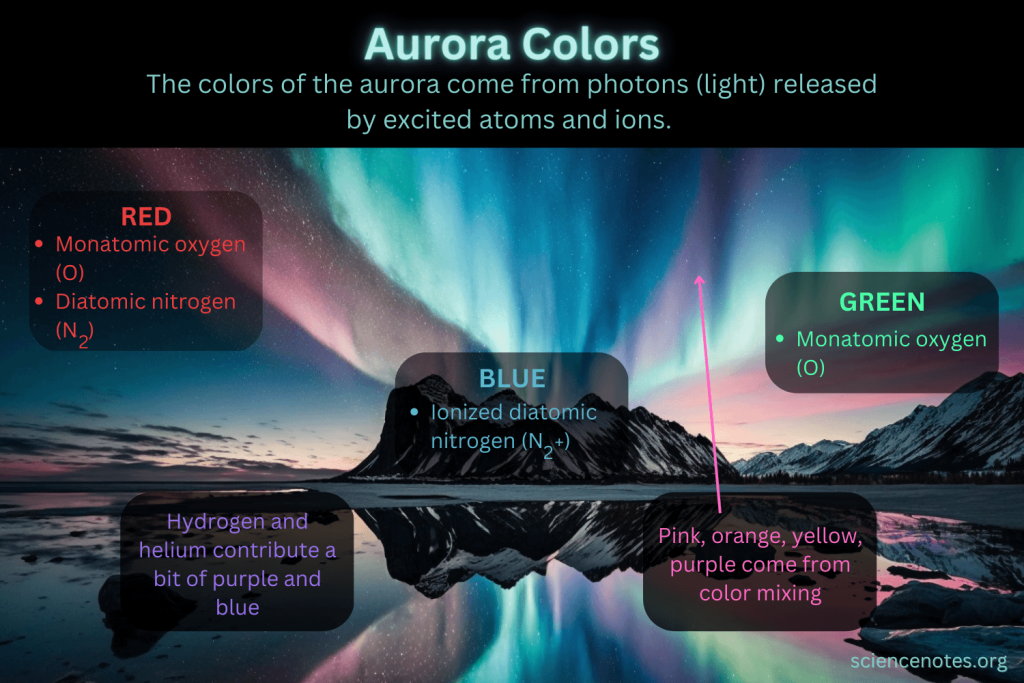
Sometimes, auroras can shine in one or two colours, and sometimes, they have all the rainbow shades. What causes this? As mentioned above, charged particles from the solar wind interact with molecules of various gases in the upper atmosphere. Those are mostly oxygen and nitrogen. When these particles collide with gas molecules, they transfer energy, which triggers the process of ionisation — the excitation of neutral atoms into ions.
When the ions return to their original state, they emit energy in the form of light, which results in auroras. Each element emits specific wavelengths, so the colours depend on the type of atom excited, the amount of energy absorbed, and the way waves interact with each other. In addition, the aurora colour range can be influenced by the light scattered in the atmosphere from the sun and moon.
The most common aurora colour is green. It occurs at altitudes between 60 and 190 miles. At this altitude, charged particles collide with high concentrations of oxygen molecules, and we see this glow best because our eyes are most sensitive to the green spectrum. At a distance of 180 to 250 miles, a red or burgundy aurora can be seen. At these altitudes, oxygen is less concentrated and excited at longer wavelengths, making the red spectrum colours predominant. This is why solid green or solid red auroras can sometimes be observed.
Why Are The Southern Lights Pink Or Purple?
These colours are associated with nitrogen emanation and are quite rare. Purple and violet auroras can be seen at altitudes of 60 miles and higher, with blue, pink, and even yellow auroras below. Most often, they can be seen during strong geostorms, when the number of charged particles interacting with the atmosphere increases. Yellow and pink result from the mixture of red, green, or blue auroras.
Where Can I See The Southern Lights?
Southern lights are observed primarily in the high latitudes of the Southern Hemisphere, the so-called auroral oval, an oval zone surrounding the Earth’s South Pole. During a quiet Sun, the diameter of the auroral oval is about 3000 km, and auroras are observed at latitudes of 60-70°. However, during times of solar activity, the auroral oval expands, and the southern lights become visible at lower latitudes, 20-25° closer to the equator.
Best 10 Places to See Southern Aurora
These sites offer the best conditions for observing aurora australis due to their geographic location and low light pollution. However, keep in mind that a chance to see the Aurora depends on many factors, including solar activity and weather conditions.
South Pole, Antarctica
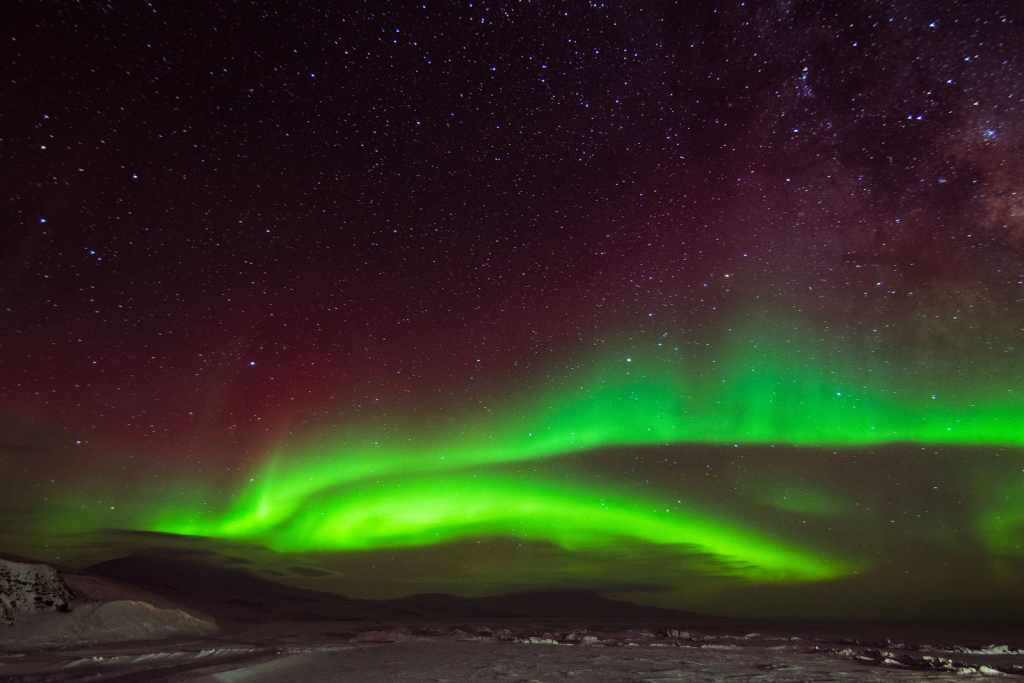
Antarctica is an extreme place of pure cold and ice and at the same time the answer to the question of where is the best place in the world to see the southern lights. Antarctica lies at the heart of the South Pole; it has some of the longest nights on Earth and many scientific stations, any of which will offer you the best aurora australis viewing experience.
Ushuaia, Patagonia, Argentina
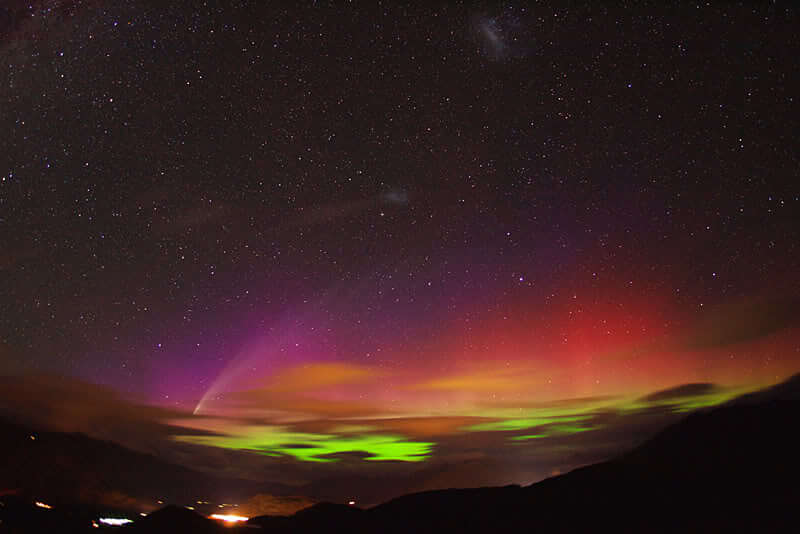
The city of Ushuaia is located on the island of Tierra del Fuego in the Patagonia region. Patagonia is unique because it occupies the territories of two countries at once: Argentina and Chile. So, if you are wondering – can you see the Southern lights in Argentina and Chile, go to Patagonia, and you will kill two birds with one stone. Ushuaia is sometimes called the gateway to Antarctica because cruises to the South Pole often depart from here. The city is known for its cold winds and clear skies, making it a perfect place for viewing aurora australis throughout the winter months.
South Georgia Island
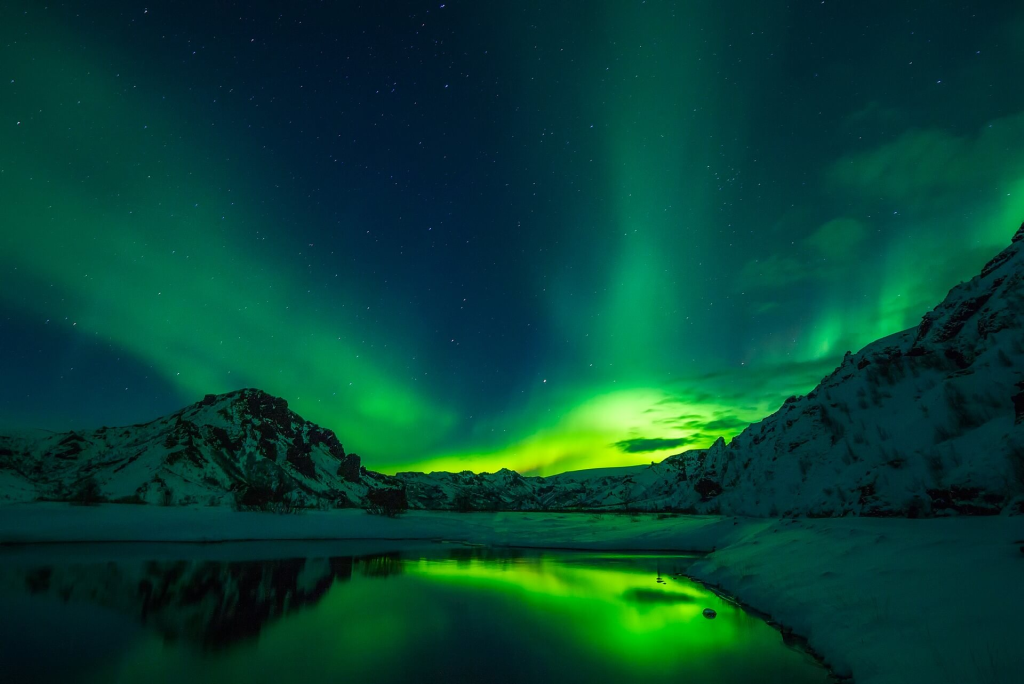
This island lies in the South Atlantic Ocean and is part of the British Overseas Territories. It is known for its rich whaling history and mountain ranges, such as Allerdale and Salisbury. The Southern Lights are especially bright here due to the lack of light pollution and clean air. The light show can be seen over glaciers and snow-capped peaks, creating an incredibly beautiful scenery.
Stewart Island, New Zealand
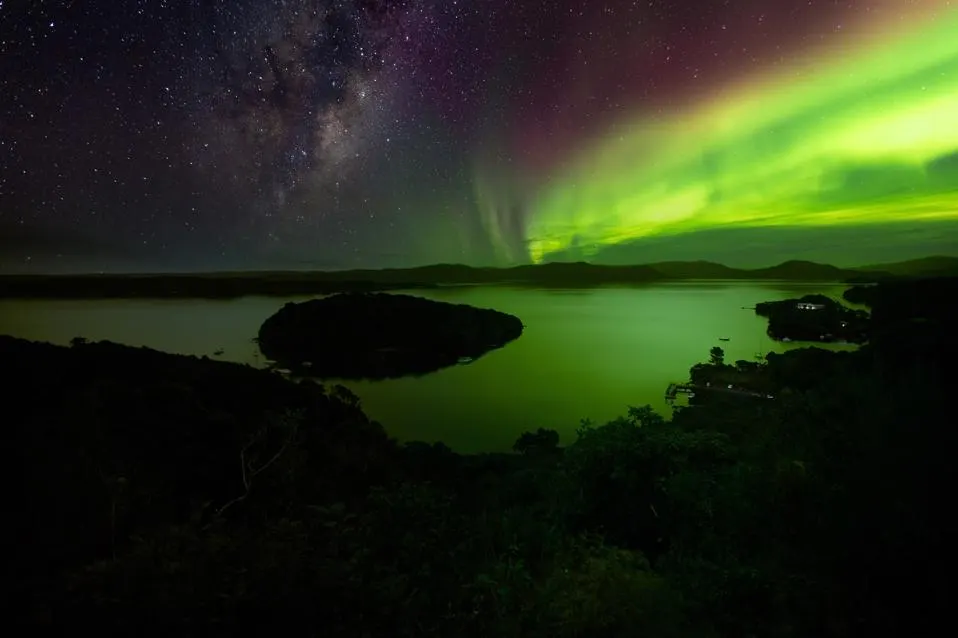
Stewart Island, or Rakiura, is New Zealand’s third largest island. It is known for its protected forests and coastline with numerous bays and fjords. The Southern Lights can be seen here over the dark waters of the Pacific Ocean, making each experience unique.
The South Shetland Islands
South Shetland Islands — this archipelago is located in the South Atlantic Ocean, north of the Antarctic Peninsula, at approximately 62° south latitude. The archipelago consists of 11 relatively large and several small islands, which, like Antarctica, are not inhabited, but have several research stations that are used to study Antarctica and the environment. If you manage to get there, you will get a chance to see the Southern Lights under favourable conditions.
Falkland Islands, United Kingdom
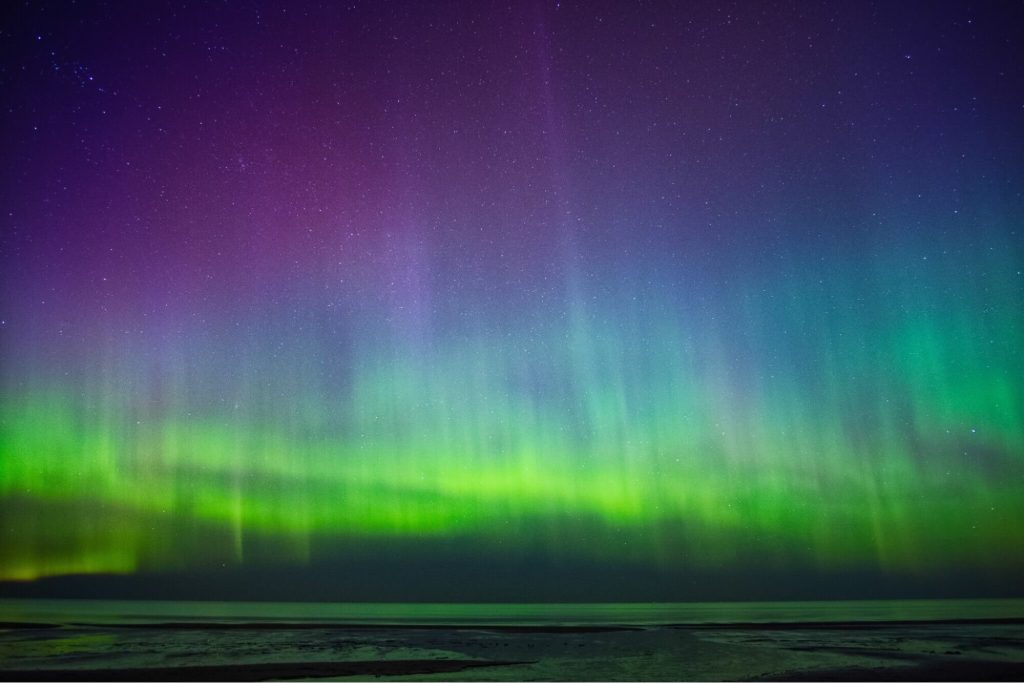
This small group of islands, located 400 miles off the coast of Argentina, is home to penguins, elephant seals, and the Southern Lights. The island is dotted with snow-capped peaks and stretches of white sand beaches. The Southern Lights can be seen here over the open ocean, which makes every moment special.
Tasmania, Australia
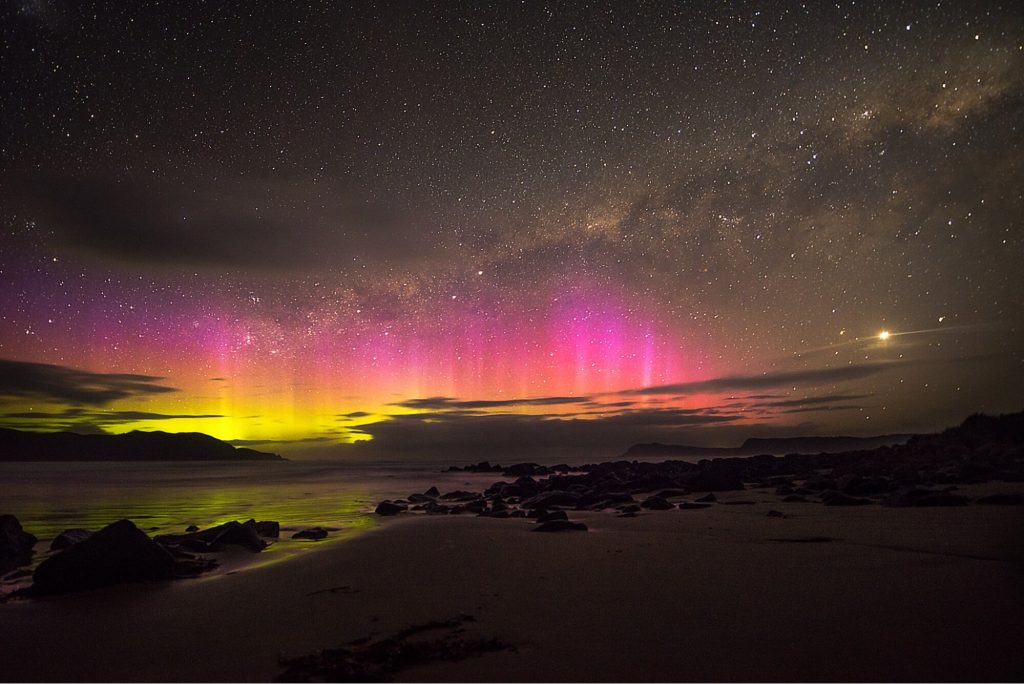
Tasmania is an Australian state located on an island of the same name approximately 240 km south of the Australian mainland, separated from the continent by the Bass Strait. The island is famous for its sparkling white sand beaches, hopping wallabies (mini kangaroos!) and the cleanest air on earth. Aurora phenomena are rare here but very bright. But even if you aren’t lucky enough to see them, the pristine nature and enchanting views are worth the trip.
Cape Schanck, Australia
Situated on the southern tip of the Mornington Peninsula, Cape Schank offers stunning views of the Bass Strait. This place is known for its rock formations and a lighthouse, providing a great backdrop for watching the Southern lights.
Phillip Island, Australia
This island, located 125 km south-south-east of Melbourne, is famous for its natural parks and penguin colonies. The Southern Lights here add a magical touch to the island’s already picturesque scenery.
Point Lonsdale, Australia
Another charming place where you can see the Southern lights in Australia. This seaside village in Victoria is known for its picturesque beaches, sea views, and historic lighthouse. Observing aurora here is combined with stunning views of the entrance to Port Phillip Bay.
Can You See The Southern Lights Every Night?
Fortunately, no. After all, if you see beauty too often, it loses its value.
The best time to observe aurora australis is from March to September, when autumn and winter come to the Southern Hemisphere and the nights become darker and longer. Also, the chance of seeing the aurora increases in years close to maximum solar activity (usually occurring every 11-13 years), which can lead to brighter and more frequent auroras.
However, even during these periods, you may not see the colourful show on any clear night. For example, the probability of observing southern lights in Tasmania is estimated at only 1-2%. This is because Tasmania is located at approximately 42° south latitude, which is almost 50 degrees north of the South Pole. And as you approach the equator, the aurora visibility decreases significantly. So, to maximise your chances of enjoying this magnificent show, you must plan your trip carefully, considering the latitude, time of the year, weather conditions, solar activity, and the Aurora Australis Forecast.
Can I See The Southern Lights On an Antarctica Cruise?
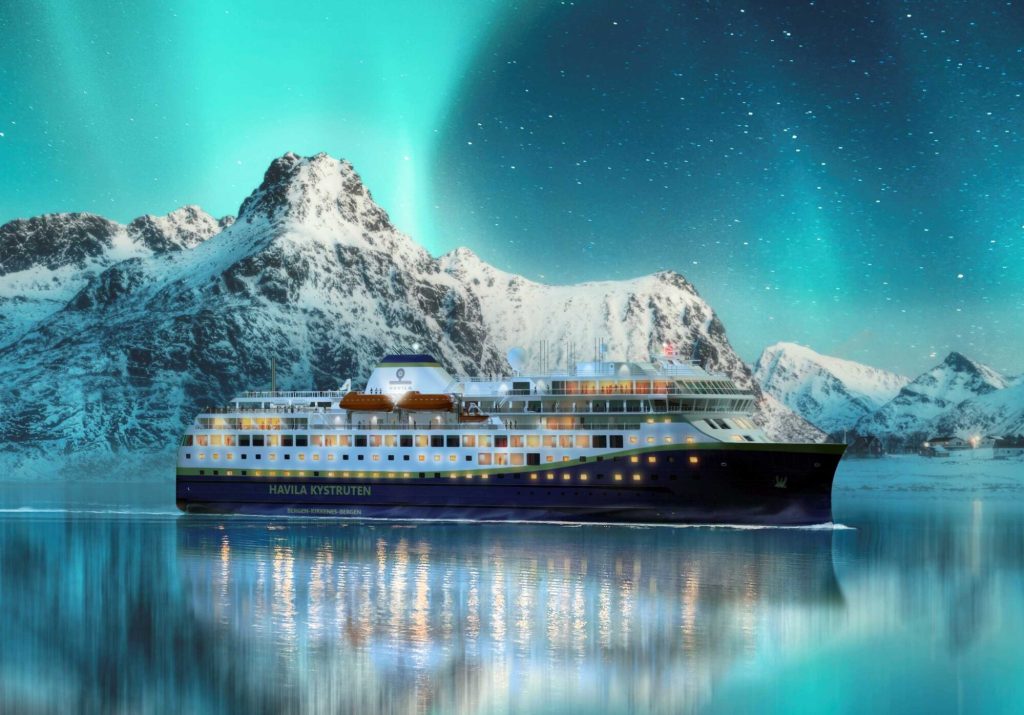
Indeed, cruises to Antarctica are often planned so that passengers have the opportunity to see this incredible natural phenomenon. For example, cruises on the SH Diana or SH Vega offer Antarctica travel in comfort and luxury, as well as an opportunity to observe the aurora. However, no one can guarantee this with 100% probability. Cloud covers and weather conditions can hinder the observation of Southern lights, even if they are present in the atmosphere.
Useful Tips On Photographing The Aurora
Auroras are usually visible to the naked eye, however, you may not be able to see all of its shades. And that’s where a smartphone with a good camera or a camera with a wide-angle lens will come in very handy. Here are some tips to help you capture the beauty of Aurora Australis:
- Use a tripod: For long exposures, the camera must be stable.
- Set up your camera in manual mode: Set your aperture to f/2.8 or lower and your ISO to 3200 to reduce noise.
- Set the focus to infinity: This will create clearer images as autofocus will be challenging in low-light conditions.
- Set the shutter speed to 10-20 seconds. A longer shutter speed will capture more light and detail but can also blur the aurora movement.
- If possible, shoot in RAW format — this is important because it captures much more data than JPEG and allows for greater flexibility in post-processing.
- Use dedicated mobile photography apps for Auroras, such as Northern Lights Photo Taker, NightCap Camera, Slow Shutter, or ProCam X Lite. These apps will help you better set up your camera for low-light shooting.
And of course, don’t forget to dress warmly, bring hot drinks, and enjoy the moment. It’s good to have a photo of Aurora Australis as a souvenir, but don’t miss out on the opportunity to observe this miracle with your own two eyes. Sometimes, pleasant memories are better than the best picture.


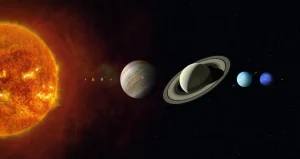

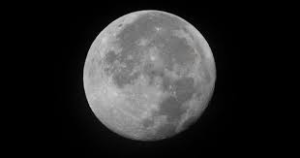

Thank you for your comment! It will be visible on the site after moderation.